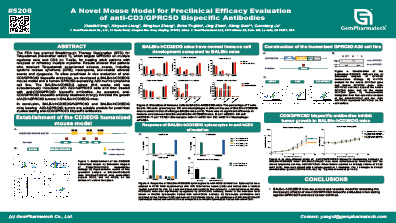
A Novel Mouse Model for Preclinical Efficacy Evaluation of anti-CD3/GPRC5D Bispecific Antibodies
BALB/c-hCD3EDG mice are a novel and valuable model for assessing the therapeutic efficacy of anti-CD3/GPRC5D bispecific antibodies when testing against GPRC5D humanized cancer cell lines.
Download

B6-KrasLSL-G12C mouse model for assessing the occurrence and development of spontaneous tumors in the lung
We constructed the KrasLSL-G12C mouse model that caries the G12C point mutation in the Kras gene with a loxP-flanked Stop cassette, enabling Cre-dependent KrasG12C expression in target organs. Kras mRNA with G12C mutation was successfully detected when the KrasLSL-G12C mice were crossed with tissue-specific Cre mice.
Two spontaneous tumor models of lung cancer with distinct features of tumorigenesis and progression were developed by crossing KrasLSL-G12C mice with Sftpc-IRES-iCre and Lyz2-iCre, respectively.
The KrasLSL-G12C; LyZ2-iCre model is a novel model to study metastatic lung cancers into the liver and possibly other organs.
Download
Two spontaneous tumor models of lung cancer with distinct features of tumorigenesis and progression were developed by crossing KrasLSL-G12C mice with Sftpc-IRES-iCre and Lyz2-iCre, respectively.
The KrasLSL-G12C; LyZ2-iCre model is a novel model to study metastatic lung cancers into the liver and possibly other organs.
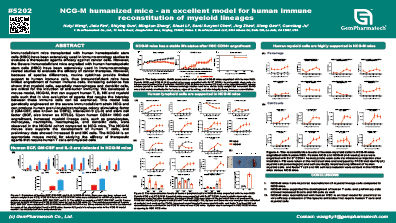
NCG-M humanized mice - an excellent model for human immune reconstitution of myeloid lineages
NCG-M mice have improved reconstitution of myeloid lineage cells compared to NCG mice.
NCG-M mice supported the development of human T cells, and preliminary data showed increased B cells and NK cells as well.
NCG-M mice reconstituted with human HSC is an ideal model for preclinical in vivo efficacy evaluation of therapeutic antibodies that require human T cells and myeloid cells.
Download
NCG-M mice supported the development of human T cells, and preliminary data showed increased B cells and NK cells as well.
NCG-M mice reconstituted with human HSC is an ideal model for preclinical in vivo efficacy evaluation of therapeutic antibodies that require human T cells and myeloid cells.
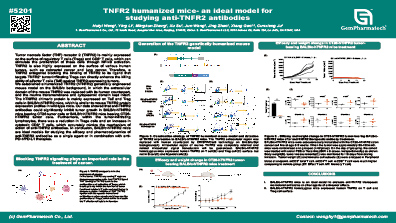
TNFR2 humanized mice- an ideal model for studying anti-TNFR2 antibodies
BALB/c-hTNFR2 mice is an ideal model to evaluate anti-TNFR2 therapeutic monoclonal antibodies or other agents of anti-tumor effects.
BALB/c-hTNFR2 homozygous mice expressed human TNFR2 on T cell and Treg cell surface.
Download
BALB/c-hTNFR2 homozygous mice expressed human TNFR2 on T cell and Treg cell surface.
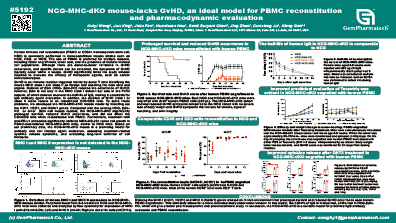
NCG-MHC-dKO mouse-lacks GvHD, an ideal model for PBMC reconstitution and pharmacodynamic evaluation
Deleting the MHC I (H2K1, H2D1) and MHC Il (H2Ab1) genes created an in vivo environment that prolonged survival and reduced GvHD occurrence upon human PBMC engraftment. This ultimately allows for a more extended study observation window. In this model, the half-life of IgG is maintained, unlike that in NCG-β2m
KO, which will give a better pharmacodynamic and pharmacokinetic study. In conclusion, the NCG-MHC-dKO is a suitable model for preclinical lgG antibody evaluation and PBMC reconstitution.
Download
KO, which will give a better pharmacodynamic and pharmacokinetic study. In conclusion, the NCG-MHC-dKO is a suitable model for preclinical lgG antibody evaluation and PBMC reconstitution.
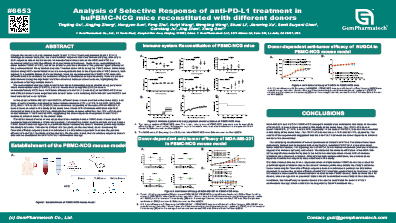
Analysis of selective response of anti-PD-L1 treatment in huPBMC-NCG mice reconstituted with different donors
MDA-MB-231 and NUGC4 PBMC-NCG xenograft models were included in this study. In the case of MDA-231, 3 donors were enrolled in this study at the same time. The TGITV of 3 donors were 17.66-MB%, 27.14%, and 52.40%, especially. In the case of NUGC4, 2 donors were enrolled in this study at the same time. The TGITV of 2 donors were 4.75% and 20.74%, especially. The results of two experiments suggested that the anti-PDL1 treatment are donor dependent, which is similar to the clinical trials.
Download
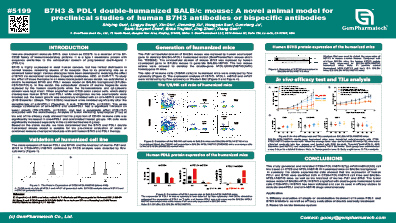
B7H3 & PDL1 double-humanized BALB/c mouse: A novel animal model for preclinical studies of human B7H3 antibodies or bispecific antibodies
This study generated and validated CT26-hPDL1/hB7H3(Tg) mPdl1/mB7h3(KO) cell line based on CT26 and hPDL1/hB7H3 KI humanized mice on BALB/c background.
Download
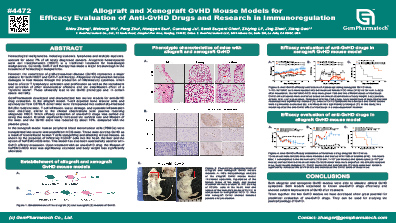
Allograft and xenograft GvHD mouse models for efficacy evaluation of Anti-GvHD drugs and research in immunoregulation
Both allogenic and xenogenic GvHD models were able to simulate clinical GvHD symptoms. Both models responded to known anti-GvHD drugs effectively and showed evident improvement of GvHD after treatment.
Taken together, the two GvHD models we have developed show great potential for preclinical evaluation of anti-GvHD drugs. They can be used for studying the pathophysiology of GvHD.
Download
Taken together, the two GvHD models we have developed show great potential for preclinical evaluation of anti-GvHD drugs. They can be used for studying the pathophysiology of GvHD.
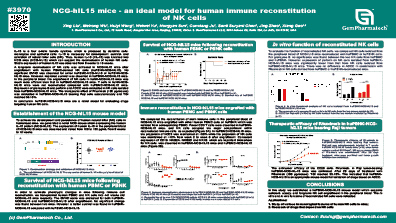
NCG-hIL15 mice - an ideal model for human immune reconstitution of NK cells
In this study, we established a huPBNK-NCG-hIL15 mouse model which supports sufficient, steady, and long-term NK cell engraftment in the peripheral blood. The in vitro and in vivo functions of reconstituted NK cells were validated.
Download
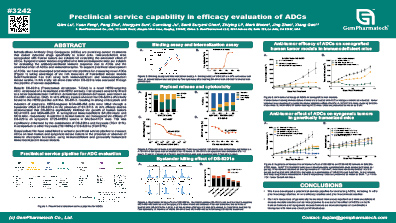
Preclinical service capability in efficacy evaluation of ADCs
We have developed a preclinical service pipeline for evaluating ADCs, including in vitro pharmacology studies, in vivo efficacy studies and pharmacokinetic studies.
Our rich resources of genetically humanized immunocompetent and immunodeficient mouse models enable our service pipeline to evaluate the effect of ADCs on both human tumors and syngeneic mouse tumors as monotherapies or combination therapies with immune checkpoint blockades.
Download
Our rich resources of genetically humanized immunocompetent and immunodeficient mouse models enable our service pipeline to evaluate the effect of ADCs on both human tumors and syngeneic mouse tumors as monotherapies or combination therapies with immune checkpoint blockades.
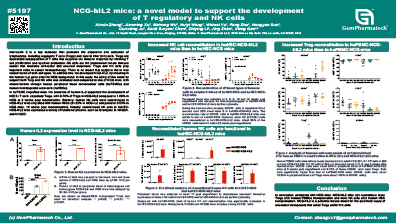
NCG-hIL2 mice: a novel model to support the development of T regulatory and NK cells
Compared with NCG mice, NCG-hIL2 mice can reconstitute more Tregs after human PBMCs transplantation and more NK cells after human HSC transplantation. NCG-hIL2 is a potential mouse model for the preclinical study of anti-tumor therapeutics that utilize Tregs and/or NK cells.
Download
Previous:AACR 2024 Poster Resources


